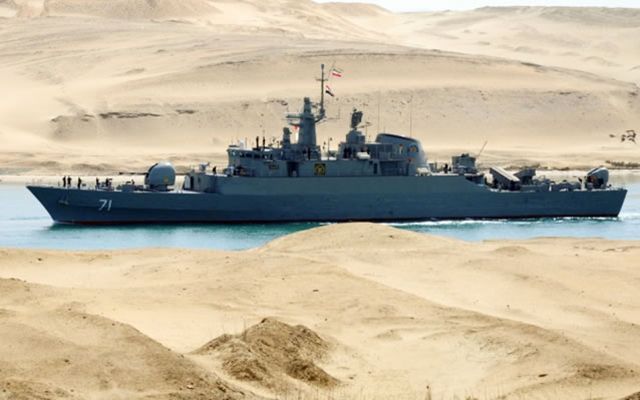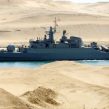
The Three Strategies behind Iran’s Projection of Naval Power
Publication: Terrorism Monitor Volume: 9 Issue: 40
By:

News of the deployment of Iranian warships across the Atlantic Ocean as far as the Gulf of Mexico has raised new concerns regarding the Islamic Republic’s growing projection of naval power (Mehr News, September 30; Press TV October 5). The news follows other alarming reports concerning Iran’s naval activities in international waters this year. In March, for instance, two Iranian warships raised a storm of controversy by their transit through the Suez Canal and their visit to a Syrian port in the Mediterranean (see Terrorism Monitor, March 10). Likewise, in October, Iran’s 16th extraterritorial naval mission sailed into the Sea of Oman, the Gulf of Aden and the northern Indian Ocean, a move that was carefully watched by Iran’s Arab neighbors in the Persian Gulf (Mehr News, July 11, 2011; Press TV, October 17, 2011). Since 2009, Iran has made 15 naval deployments beyond its maritime territories, an unprecedented step in Iran’s military history (IRNA, April 21).
Such developments are of concern as the Iranian defense ministry expands its weapons systems, arming both older and newer warships with new cruise missile capabilities, produced en masse in Iran and designed largely for sea-based targets (IRNA, October 1). The mass-produced Ghader anti-ship missiles carried both by the regular navy and the Islamic Revolutionary Guard Corps Navy (IRGCN) can be fired from ground and sea and are equipped with anti-jamming radar capabilities. Iran’s defense ministry claims the Ghader has a range of more than 200 kilometers (Press TV, September 28). The Ghader missiles are expected to replace the undelivered Russian S-300 missile defense system, with the aim of protecting Iranian nuclear facilities against Israeli or American ship-launched aerial or cruise missile attacks.
Likewise, domestically-built destroyers like the Jamaran are a product of a new Iranian naval strategy that relies on newly built warships for the launch of cruise missiles designed to strike sea-based targets. [1] New warships like the Jamaran are equipped with advanced electronic warfare technology that includes anti-aircraft capability (Press TV, October 9, 2011). Meanwhile, the building of new warships is matched by the production of new submarines like the Ghadir (launched in 2007) and Fateh (launched in 2011), high-speed missile boats and naval aircraft in a bid to increase the state’s maritime capabilities in the Persian Gulf and beyond (Press TV, October June 1). Having announced plans to build a new aircraft carrier, the Islamic Republic now claims to have one of the strongest naval forces in the region, even capable of challenging the United States (Press TV, September 28, 2011). Such claims, however, are almost certainly part of Iran’s “Soft War” propaganda strategy as Iran’s navy, even with an aircraft carrier, cannot pose a serious challenge to the American navy (for the “Soft War” strategy, see Terrorism Monitor, June 12, 2010).
However, such increased naval activity entails a number of purposes that go beyond a simple objective of deterring the United States. In many ways, Iran’s latest naval activities can be identified on three strategic levels. First and most obviously, on the security level, Iran’s objective is to hold off the United States in its initial stage of aerial attack, which most likely would be focused on both the Iranian Air Force and Iran’s nuclear facilities. The development of Iranian missile capabilities in recent years is primarily meant to cause significant damage to the American naval forces, especially as the American air attacks will most likely be launched from its naval assets in the Persian Gulf. This type of conventional military operation, including coastal missile launchers, would most likely include blocking the Strait of Hormuz and be backed with the deployment of asymmetrical weapons, such as unleashing the IRGCN’s speed-boats against sea-based targets like American warships (IRNA, July 7; Mehr News, February 1).
The second strategy of Iranian naval activity revolves around economic security. With the increase of piracy in the Gulf of Aden, the Iranian navy has the responsibility of protecting Iranian commercial cargos and securing Iran’s economic activities in the Persian Gulf sea-lanes (IRNA October 17). However, Iran’s recent naval presence in the Atlantic and Mediterranean seas brings to light a third strategy that serves neither an immediate military nor an economic security interest. While one can see a mere symbolic move in deploying its warships near American and Israeli coastlines, Iran’s third naval strategy should be viewed as part and parcel of the “Soft War” that Tehran launched against its enemies in September 2009. In an attempt to obtain intelligence and “spread Iranian culture,” the presence of the Iranian navy in Atlantic waters dominated by U.S. naval assets represents a propaganda strategy to overstate the capabilities of Iran’s armed forces and give the impression of an overwhelming force to the Islamic Republic’s enemies (IRNA, October 9). Moreover, as Tehran undergoes major internal factional conflict and weakening of the regime, such military displays may also provide an opportunity for Supreme Leader Ayatollah Ali Khamenei to promote an image of strength, mostly for domestic consumption.
The April 1988 American defeat of the Iranian naval forces near the close of the Iran-Iraq War still haunts Tehran. In order to prevent a repeat of this outcome, the Iranian navy will continue to make its presence felt while trying to avoid a military confrontation. As the Iranian terror-plot against a Saudi Arabian diplomat on American soil moves the U.S. and Iran closer to open conflict, the lack of communication between Iranian naval forces (particularly those of the IRGCN responsible for unconventional warfare) and the American navy carries a strong potential for military confrontation.
Nima Adelkhah is an independent analyst based in New York. His current research agenda includes the Middle East, military strategy and technology, and nuclear proliferation among other defense and security issues.
Note:
1. Though Iranian officials describe the Jamaran as a destroyer, its size and armament is actually equivalent to a small frigate.





